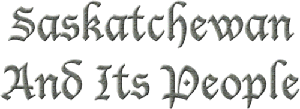GIGANTIC FARMS AND FAILURES.
THE BIG BELL FARM.
ing wheat on the Bell Farm he put at five dollars an acre; and this in-
eluded depreciation and interest on capital. Major Bell's plan for working
the farm was by dividing it into 200-acre portions and treating each as a
separate farm with separate outfits. Each farm had on it a house and
stables and the whole of these places were connected with Major Bell's
office by telephone. There were foremen who each looked after a certain
number of these 200-acre divisions. The year 1884 was a good year on
the Bell Farm, and it grew fifty to sixty thousand bushels of wheat. This
was all taken by the Ogilvie Milling Company at a dollar a bushel; and
the big scheme seemed to have proved itself. In 1885 all the teams were
on the rebellion transport and no crop was put in.
1886 was a very dry and unremunerative year. The price of wheat
was seventy-five to eighty cents a bushel and it cost 32 cents a bushel to
get it to Montreal. The loss was heavy Major Bell went to England.to
further a scheme to establish an Agricultural College on the farm and a.
large: building was erected for this purpose at a cost of twelve thousand
dollars. It was expected that Dr.. Tanner, a noted professor of agricul-
ture, would be the principal. The scheme, however, never materialized.
The prospects of the company at first were very bright. Governor
Dewdney was the President of the Company and the report of 1884 shows
that in 1883, the first season, 2,700 acres were .broken. In 1883 a thirty
thousand bushel granary was erected; in 1884 six thousand acres were in
crop. The idea was to sell the small farms to bona fide settlers, but the
time came when the Company was glad to sell in large or small lots. Lord
Brassey bought a big block mostly south. of Indian Head, and the
Brassey farms as they were called attracted a good deal of notice. Lord
Brassey started a creamery in Indian Head, and built an Anglican Church,
and a Bishop's residence south of the track. But the Brassey farms went
the way of all large enterprises. They did not pay. Eventually all the
Bell Farm passed into the hands of small. holders and actual occupiers,
while a section became the Experimental Farm. Major Bell deserves the
most kindly and appreciative remembrance, and .he has it from all the old
timers. He was deservedly popular and was one of the brightest and most
energetic men the west ever saw. Mr. A. W. Sherwood, a popular and
highly respected citizen of Indian Head, and a cousin of Major Bell. was
the secretary of Qu'Appelle Valley Farming Company.
Bibliography follows:

